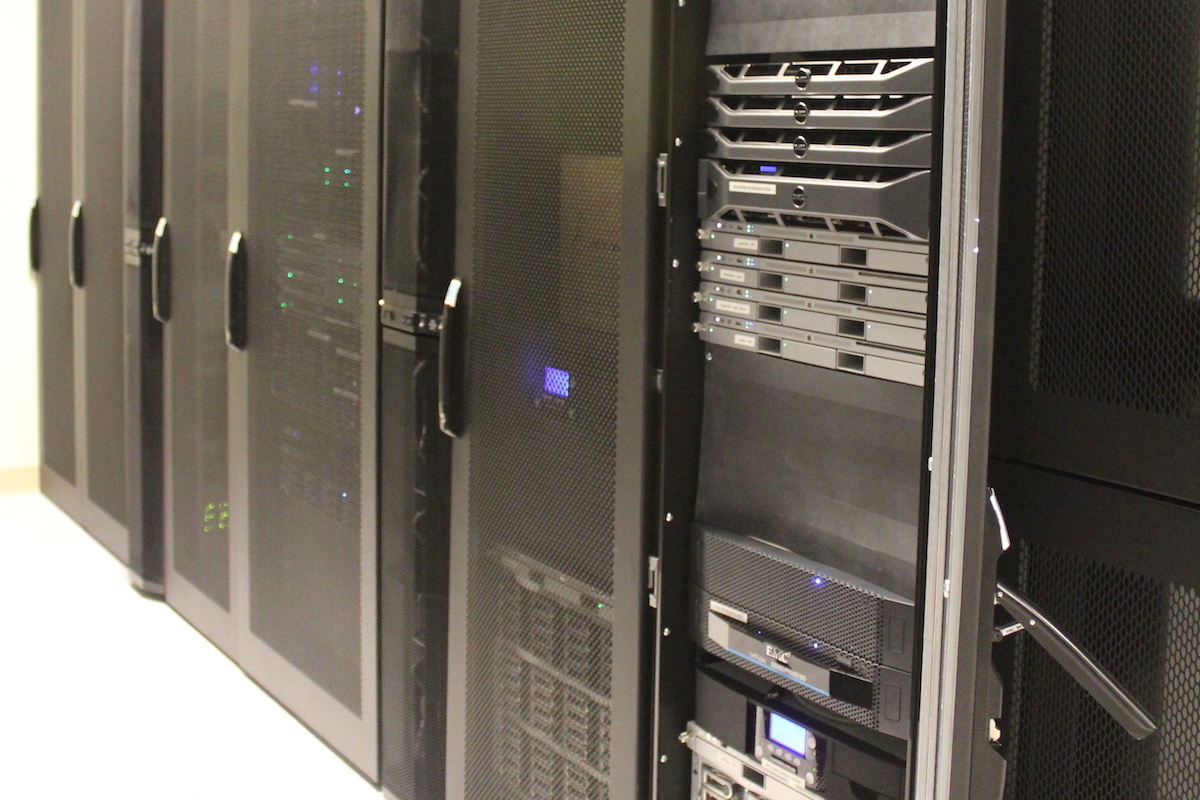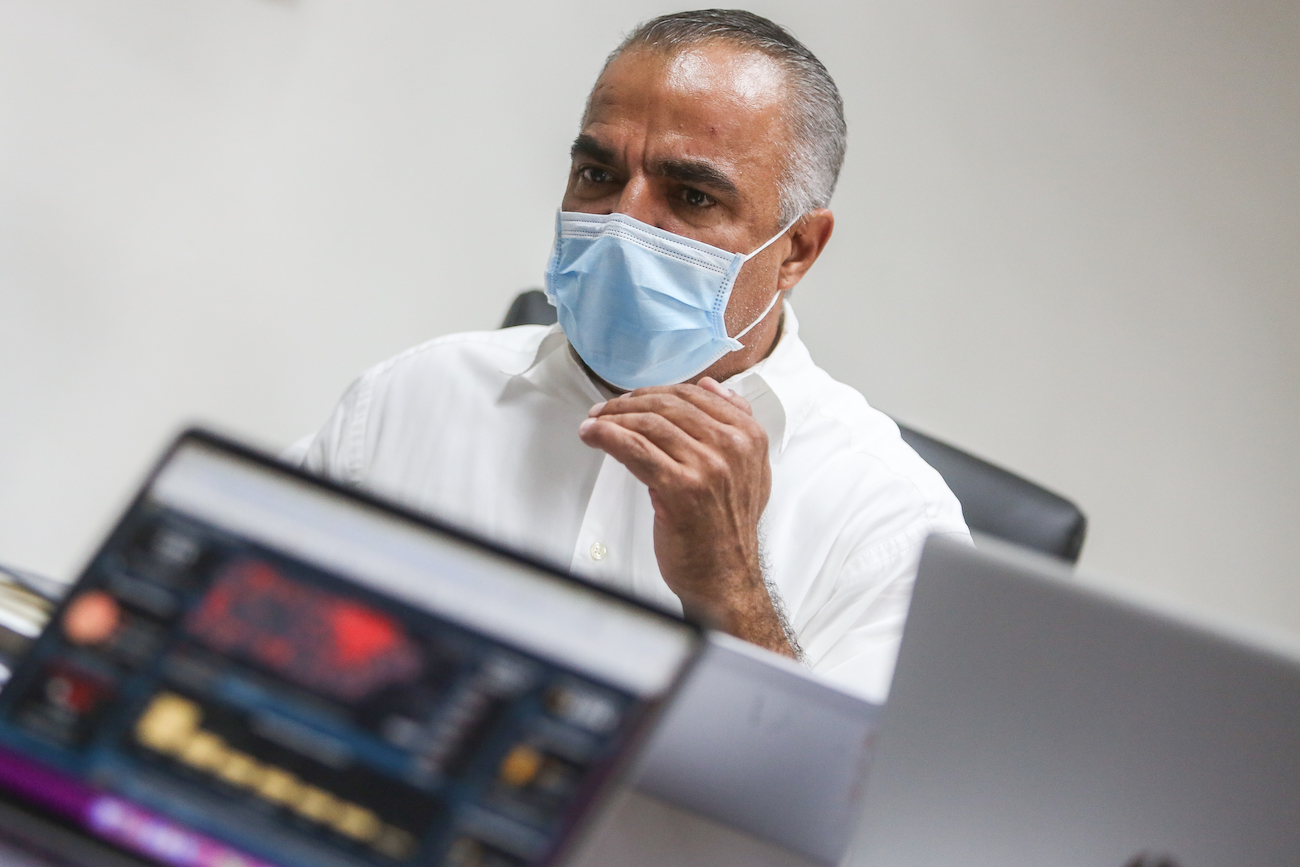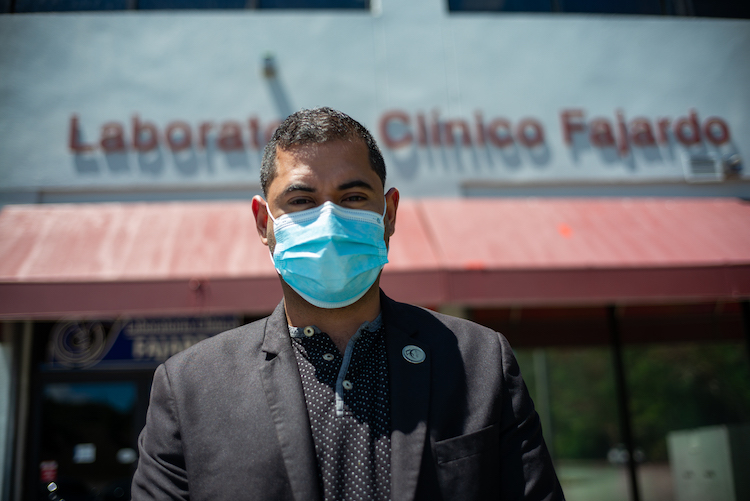

(Photo by quinn.anya on Visual Hunt)
By Eliván Martínez Mercado
Versión en español aquí.
SAN JUAN, Puerto Rico — For almost a decade, the government of Puerto Rico wasted the opportunity to put together an information network that would have provided real-time data to save lives during a pandemic, such as the one caused by COVID-19.
When Secretary Lorenzo González left the position as head of the Department of Health (DH) in 2013, that project was in a very early stage. Upon returning to steer the DH in 2020, the agency was not only mired in corruption scandals and mismanagement of the response to the pandemic, but the Puerto Rico Health Information Network (PRHIN) was not operating.
PRHIN would have allowed the electronic exchange of medical records among all health care providers, to better care for patients, and send real-time alerts to the DH to monitor any public health threat.
The information network system, which has cost more than $ 7.7 million in federal funds, should have been ready six years ago. If the DH had implemented it, much of the missing data problems that have come up in the handling of the epidemic would have been spared, the Secretary told the Center for Investigative Journalism (CPI, in Spanish).
This information network should offer the possibility of providing the DH data on the positive and negative COVID-19 cases, with information from the laboratory that took the sample and patient details, coupled with their address, to do contacts tracing and determine the people they were close to and may have infected.
“You know what? The most important information is the one gathered through direct service to the population. So, having the electronic medical record, having live, effective, immediate information, would definitely help us a lot to know the resources we have and where we’re headed” during the pandemic, González said. “I swear to God, it’s sad. We have to resolve the situation,” he said.
PRHIN could have also helped with the shortage of tests seen during the response to the pandemic. If the Department of Health had had immediate information of geographic areas for people with COVID-19 symptoms —cough, fever and respiratory distress— it would have received an alert on possible infection hot spots and determine where to put the resources when they are needed.
Federal and Puerto Rico Funds Are Lost
The PRHIN was created by the Puerto Rico Electronic Health Information Exchange Management Act (Act 40 of 2012), which authorizes the interconnection of the information systems used by doctors, laboratories, hospitals and the DH.
Due to the mismanagement of this initiative, the DH lost almost $1 million in federal funds that the Office of the National Coordinator for Health Information Technology —attached to the federal Department of Health and Human Services— would have allocated to the program, Antonio Sisco, former Health Information Technology Coordinator and former executive director of PRHIN, told the CPI. There is also more than $3.5 million in server, storage, communications and security equipment that has never been up and running and is now obsolete, Sisco added.
Act 40 of 2012 enables the provisions of the American Recovery and Reinvestment Act (ARRA) in Puerto Rico, signed in 2009 by former President Barack Obama, that allocates funds and establishes the legal framework for the electronic health information exchange in the United States and its territories, something which should have been running since 2014.
Budgetary problems and the opposition from health insurances companies that refuse to share patients’s information, jeopardized the implementation of this initiative. But the main obstacle to operating the PRHIN has been the inefficiency of the Department of Health under both the administrations of the Popular Democratic Party and the New Progressive Party, according to Sisco and another source consulted by the CPI.
Former Gov. Alejandro García Padilla appointed Sisco as Health Information Technology Coordinator in 2013. The position has a seven-year term. But Sisco did not wait until 2020, when his term was to expire, and resigned in 2018.
He said his exit responded to the fact that Mabel Cabeza, who was a special assistant to the former Health Secretary Rafael Rodríguez Mercado, told him days before Hurricane María hit the island that from that moment on he would have to respond to Alexander Quevedo, director of the Department of Health’s Office of Information Technology and Developments.
“Anything I requested was never put into effect. All the procurements, the hiring, they stalled everything,” Sisco said. “I lost track of things when they got to Mr. Quevedo’s office. Things were not fulfilled due to forces above my pay grade.”
The order to migrate the PRHIN to the Department of Health’s umbrella clashes with the law that created it. That law states that the PRHIN is a nonprofit corporation with administrative and fiscal autonomy, independent of the Executive Branch, and that the Health Information Technology Coordinator, along with the Health Secretary (not subordinated to him or to any of his employees), is responsible for the strategic and operational plan to achieve the electronic exchange of health information.
“I had nothing to do with that decision, which was requested by Health Secretary Dr. Rafael Rodríguez Mercado, as the highest authority, after a recommendation from Attorney Michael Rey, regarding the legality of the [PRHIN] structure,” Cabeza said in written statements to the CPI. Cabeza provided a document as evidence that Rodríguez Mercado had given the order. Rey was the former secretary’s legal advisor.
After Sisco’s departure in 2018, Quevedo was named Health Information Technology Coordinator and his appointment was approved by the Senate in June 2019.
González Would Restore the PRHIN’s Independence
“If this is going on now under the Department of Health, I will definitely rectify it,” González vowed. “We’re clear. That was an entity independent of the Department of Health.”
The Secretary said that because he just came back to the agency, he still does not have all the details of what happened with the PRHIN and with the technology equipment that has not been used. He asked for two additional days to provide the CPI with more details, but then did not return the calls.


Lorenzo González (Nahira Montcourt | Centro de Periodismo Investigativo)
During a virtual press conference, Fiscal Control Board Executive Director Natalie Jaresko answered the question of whether the Boardwill increase government agency budgets to improve their information systems, given problems such as data management in the DH during the pandemic.
“The issue is not only money, it is vision and leadership,” Jaresko said.
She said the Puerto Rico Innovation and Technology Service (PRITS), created in 2019 to develop government technological projects, will see a budgetary increase. PRITS would now have greater authority and the Board’s support to lead and supervise investment in information systems, Jaresko said.
For example, it will review all contracts awarded by technology-related agencies and set priorities when deciding which project will be carried out.
In addition to the federal funds allocated to the project, there were more than $770,000 in matching transfers from the government of Puerto Rico that were spent on PRHIN operations, Sisco said.
The funds were reflected in the Department of Health accounts, which was the subrecipient of those federal allocations, and the agency was to transfer the money to PRHIN through a memorandum of understanding. That was a problem under the tenure of Ana Ríus, Health Secretary during the García Padilla administration, Sisco said.
“I don’t know why the funds were not transferred to us. Not having the power to hire staff, means the office becomes inoperative. I did the paperwork for some contracts and when it reached the Secretary’s desk, she did not sign it. You can’t execute the contract and I couldn’t hire people because they didn’t give us the money.”
The contracts to which Sisco refers were for companies Tranxcend (to develop the health information exchange platform), and CCR Group (for project management and finances) to continue operating with local funds. They had already offered services to PRHIN with federal funds. “I have zero complaints from these companies. Everything I asked for, they did on time. They were doing what had to be done. So, I wanted to renew their contract.”
Ríus claims she does not remember why she opposed it. “Every contract that came before me was subject to the scrutiny of the information technology staff, and if it wasn’t signed it was because they advised me not to sign it,” said Ríus. “It was always my concern to get the PRHIN running,” she said.
Having patients’ medical records allows the government to know the reality of the public health situation and what is paid in public service expenses. Dr. Víctor Ramos, president of the Puerto Rico College of Physicians and Surgeons, said “all” health insurers, mainly the big ones such as Triple-S, MMM, MCS and First Medical, have opposed PRHIN because it is in their own interest to keep the patient’s information to themselves. Two other sources directly related to PRHIN confirmed this to the CPI.
“If someone wants to conductconduct a study with their data, they charge for that. Having people’s health information is the most powerful tool for insurers. This is why the government of Puerto Rico has been unable to access this information, and the reason why there are several uncoordinated information systems in Puerto Rico. Some communications are done electronically and with manageable tools, such as the registration of vaccines, but others are done by hand, such as those for reporting illnesses like influenza, which can cause information to be lost in the process,” warned Ramos.
The US Department of Health and Social Services should have also implemented an electronic network of the state of the public health situation, to monitor in real time multiple health data, including threats from pandemics between states and territories. But the federal agency breached its responsibility and is now facing COVID-19 blindly.
In Puerto Rico, the Department of Health is now addressing the pandemic with an outdated information management system. Juan Rexach, President of the Association of Clinical Laboratories , said that, in the case of HIV data, laboratories perform the tests on patients and send them to other labs that only process the results and they are the ones that report to the DH’s Epidemiology Office. This is reported weekly, sent by fax or email, along with the demographic information of the patients who tested positive.


Dr. Juan RexachEric Rojas | Centro de Periodismo Investigativo) (
In the absence of an electronic platform that would allow the Department of Health to receive the COVID-19 tests results in a complete, quick and secure way, Rexach recommended at a meeting in La Fortaleza on March 20, the use of the same method of reporting HIV data, modified for the coronavirus, e same method of reporting HIV data, modified for the coronavirus, to avoid problems in the results report.
“The problem isn’t the labs, it’s how the lab information is handled,” said Rexach, who represents private companies, but also refers to public laboratories. “We have the information systems ready, which collect full patient data. The problem lies in the Department of Health.”
But Governor Wanda Vázquez and former Health Secretary Concepción Quiñones de Longo told the Association of Clinical Laboratories that another protocol would be followed: that those processing the tests would continue to report confirmed cases of COVID-19, while those who only dothe tests had to fill out a PDF form provided by the Centers for Disease Control and Prevention (CDC) for people suspected of having the coronavirus (the Person Under Investigation, or PUI), Rexach explained.
Thosetesting until April 17 (laboratories, public hospitals and the Veterans Administration Caribbean Healthcare SystemCaribbean Healthcare System) had to send the document by email to the Department of Health, which reviewed it, confirmed the results and entered the data in the CDC’s information system—a process that had to happen within 48 hours from the time the test result was confirmed.
However, the CDC report does not provide all of the patient’s data, such as the exact address, essential for tracking contacts. In addition, it lacks socioeconomic notes that help determine how the pandemic affects the most disadvantaged sectors: there is no data on schooling, employment and whether the person has health insurance.
The process was further complicated. The laboratories and health centers that perform the molecular tests have also been doing serological tests (which show that the person has created antibodies to COVID-19). But there is no clear protocol and there are mixed procedures to process them, as well as lack of knowledge about when and who is responsible for reporting to the DH.
If the test comes back positive and a doctor orders a molecular test afterwards, the Epidemiology Office would go ahead would combine the data. The Department of Health also went weeks without fully and uniformly receiving the results of serological or “rapid” tests, the CPI revealed.
The Health Secretary admitted the serious deficiencies in the COVID-19 data the government handed to the CPI, including double and triple case counts. One of the problems with the numbers that the DH was reporting is that there was no differentiation between rapid and molecular tests.
The DH issued Administrative Order 440, which authorizes licensed physicians and pharmacists to test for COVID-19 in addition to laboratories, and orders the result to be reported within 24 hours from the time it was obtained.
González said at a press conference that the DH found that the number of tests conducted since the start of the pandemic is more than double to what the agency had reported, and that it increased from about 12,600 to more than 30,000.
He confirmed that the difference is due to the fact that the Department of Health’s numbers were combined with the Municipality of San Juan’s numbers and those of Laboratorios Toledo, one of the largest labs in Puerto Rico that conducts and processes tests. The Department of Health had excluded more than 8,000 negative results from its database in the case of Toledo Laboratories alone, the official admitted.
“One of the Department of Health’s problems is that many of these files [documents with results] arrive manually, and that the website to generate information directly from the laboratories is not being used, even though this request has been made [by the laboratories] directly to the Government of Puerto Rico through the Department of Health,” González said last Tuesday.
The DH enabled the website BioPortal to process the results electronically after the data problems were discovered. It has been working for a week, so laboratories are just starting to learn the process, and starting to use it, Rexach said.
On April 22, Ilia Toledo, president of Laboratorios Toledo, told the CPI that earlier this month she contacted DH Epidemiologist, David Capó, to evaluate an electronic platform to report test results. To this date, the DH had not shared with the lab —which processes the highest volume of tests in Puerto Rico— the mechanism to electronically report results.
“Right now, we send them paper and scans,” Toledo said.
The lack of an information exchange system during the pandemic has prompted a group of scientists from the Ponce Health Sciences University’s Public Health Program, the Puerto Rico Public Health Trust, and the Harvard TH Chan School to set in motion a project that has become an alternative for syndromic surveillance.
It’s a survey that people who have COVID-19 symptoms voluntarily fill out, and also includes sociodemographic and mental health data. The information is associated with a map of Puerto Rico that uses geolocation to show places where the symptoms manifest.
Project Director, Dr. Melissa Marzán, told the CPI that this information is being discussed with the pandemic response group in the south and southwest region of the island, in which mayors are participating. The survey can be used to establish criteria for where to start testing for COVID-19 and determining which specific areas of the island can be opened to commercial and industrial activities.
Marzán confirmed that she presented the tool to the Secretary of Health two weeks ago hoping it would be adopted during the emergency to detect possible sources of infection and to integrate it into plans to open the economy. González has not yet informed her if that is taking place.
***
Luis J. Valentín Ortiz contributed to this story.
Comments to emartinez@periodismoinvestigativo.com


